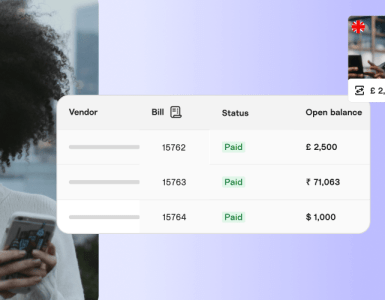As you might have noticed, there are a lot of trendy design professions nowadays, so it’s tricky to keep them all straight! Animators, graphic designers, web designers, user interface designers, user experience designers – and the list goes on! It’s time to know more about the other really prospective design profession, so let’s have a look at motion design.
Most scientists claim that motion graphics is a new growing field, which is not likely to ebb anytime soon. One of the main reasons is that all the modern graphics used in motion pictures get old very quickly, that’s why we always need new ideas to feel a need.
So, what exactly the motion design means? What are the key features and the future of this unusual profession? In this article, we will find the answers to these and other questions, let’s get it started!
What’s The Definition Of Motion Design?
According to the Society for Experiential Graphic Design (SEGD), motion design is a discipline that applies graphic design principles to filmmaking and video production through the use of animation and visual effects. To get it simple, its graphic design is put into motion. This motion uses imagery to bring a message to the audience, some of them even can add special energy and visual interest to it.
There are a lot of uses for motion design but mostly it’s used to enhance a story by simplifying complicated ideas or making less interesting visuals more catchy. Because of the variety of styles, this profession has been deployed by a lot of companies in every industry. While some can be fun and quirky, others deliver serious-minded business-to-business (B2B) content, describe complex visions, or explain technical processes.
Why Are Motion Graphics Important?
Motion graphics offer many benefits because of its live-action video in plenty of industries and meanings. For example, in software development or pharmaceuticals, it is now that easy to explain the basis without using motion graphics, because they need to explain the abstract concepts or those which exist at microscopic or macroscopic scales. Motion graphics can clearly explain these processes in fluid and illuminating ways, transitioning seamlessly from illustration to data visualization, from up in the clouds to deep in the sea, from galaxy-scale to atom-sized.
In fact, there are many more reasons to use a video or motion graphic in your everyday life as well as business. According to the latest data, we have found out that 87% of businesses are using video in their marketing content, which allows increasing the income of at least 49%. Impressive, yeah?
Yet motion graphics can also be used as training tools. You see, the combination of visual effects along with an oral presentation can really boost the memory so that people who are to learn some information or new skills, will be less likely to miss the information. In one study, 3 days after receiving information, audiences remembered 10% of the information from a verbal-only presentation, compared to 65% of the information when the oral presentation was combined with visuals.
Without any doubt, the storytelling power of the video is the best way to introduce your message. So, what else can you do using motion design? Except for the methods we have already mentioned above, you can also draw attention to your expo booth, drive audiences to action, create awareness of an issue, elevate your homepage, and much more.
Make a long story into a short one, whatever message you want to express. A motion graphic will definitely help you with that.
How To Use Motion Design Effectively
Talking about any of the goals you want to achieve via motion design, firstly you have to find suitable options for how to present your story. Is your video made about your product? Perhaps, that’s about your company, or the issues it can help to solve? We are sure that the questions like the following will help you to identify which of the types of motion design is ideal for you.
So, before choosing the direction of your working field, don’t hesitate to ask yourself the following list of questions:
1. Who is my target audience? How can my product solve the problems they have?
These questions can help you to get the leading idea about the customers that will become the main consumers of your work. In such a way you will be much closer to your audience, thus, make the final product more catchy.
2. What message do I want to convey? How can I convey it effectively?
After understanding consumers’ needs, it’s time to think over the idea you want to present. For this purpose, you can note all the ideas you might suddenly take in your mind: from the Internet, social media, or people’s minds on a certain topic. Then it is time for brainstorming, as the message that you have to present, must be memorable, informative, and simple at the same time.
3. What are the main ideas the audience should remember?
Along with the main message, the audience should learn something from your work. At the same time, it will make the audience associate these ideas along with your product or business, and if you combine it with the visual effects, it will absolutely leave a great final impression.
4. What business objectives do I want to achieve?
Another motivation you should always keep in mind is that your work should meet the expectations. We advise you to plan over the main business objectives you want to achieve, and for how long. That is important for your personal motivation and your future career as well.
5. What benefits will I gain from using motion design?
The last but not the least is that every work should bring you something. It might be rather a material or mental aspect. For instance, motion design can really boost your imagination, improve your self-confidence and leadership skills. Another good advantage will be if your project will bring you some more income for future development.
What Are The Main Types Of Motion Design?
As soon as the answers are ready, now it will be much easier for you to understand which type of motion design suits you the most, so, let’s have a look at the three key sorts of motion design.
The first one is the emotive type. It means that the main task of your video is to move the audience to feel something, to evoke emotions which will be associated with your business, for instance. The second type of motion design is called “explainer”. Its main aim is to define a concept, product, service, or organization, and thus make it memorable for people. The third is a promotional type. The priority of it is selling a product or service, for example, you may notice it while watching ads.
In addition, motion design is not only about the videos. At the same time, you can use all these methods for the static design, for example, while creating your e-commerce website. It’s not a great secret that users prefer well-designed and easy-to-use websites instead of those which can’t keep pace in time.
How To Become A Professional Motion Designer
Having learned a lot about this profession, now we can say that a great motion designer has been trained in traditional graphic design first and then has learned to integrate the elements of time, sound, and space into his or her existing skill set. In addition, cool animation design is the golden mean between overproduced videos, rapid-onset trends, and simple static content, so if you master this skill perfectly, with the accurate use of visual and audio effects, it conveys the message effectively. And it’s not necessary to put the years into learning the basics of that profession, instead, you can easily find different courses on motion design online.
You might ask us where these motion designers can actually find work? According to the Bureau of Labor Statistics (BLS), they typically work in motion picture offices, computer systems, and software companies, and advertising agencies. Besides, motion designers also come from film or animation backgrounds, so we are sure that you will manage to find the best option for yourself!
Conclusion
All in all, motion graphics is one of the most prospective modern professions nowadays. It is trendy because of the wide field of usage and variety of places where this profession can be applied. We are sure that in the 21st century the motion design is an essential part of any online product. Up to the present, it’s still been providing plenty of great ideas on how to boost the business by means of design. For example, storytelling is the perfect way for motion design to catch people’s attention in 2020. 3D effects, grain effects, typography – all these web design trends will certainly affect the future of motion design. So, are you ready to start?






